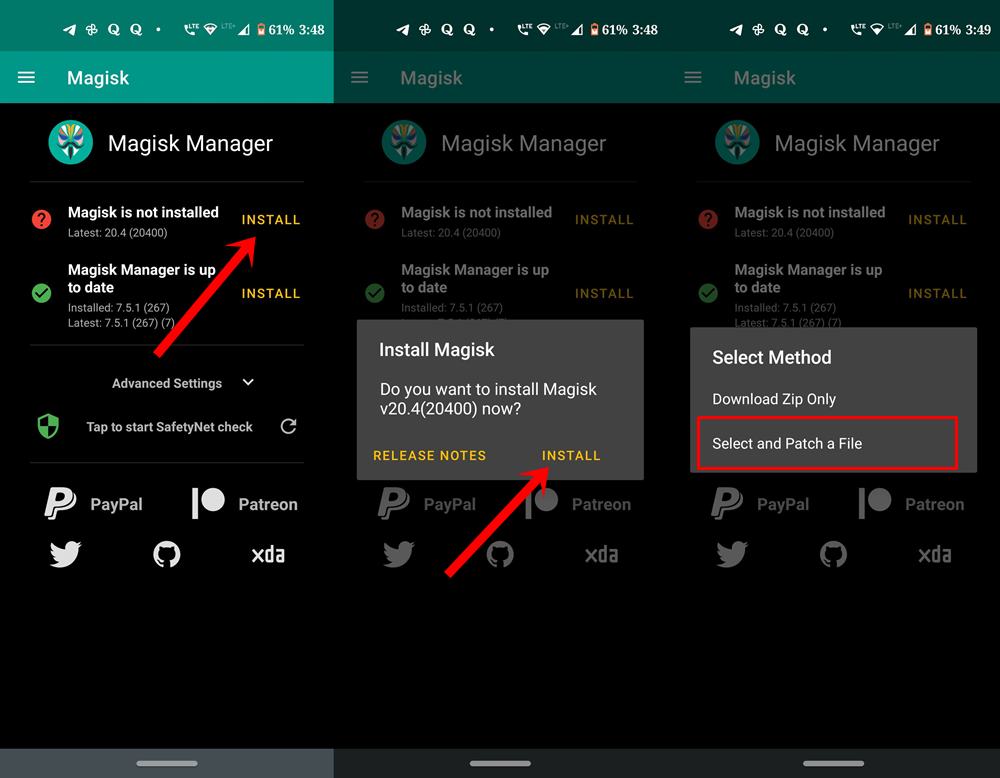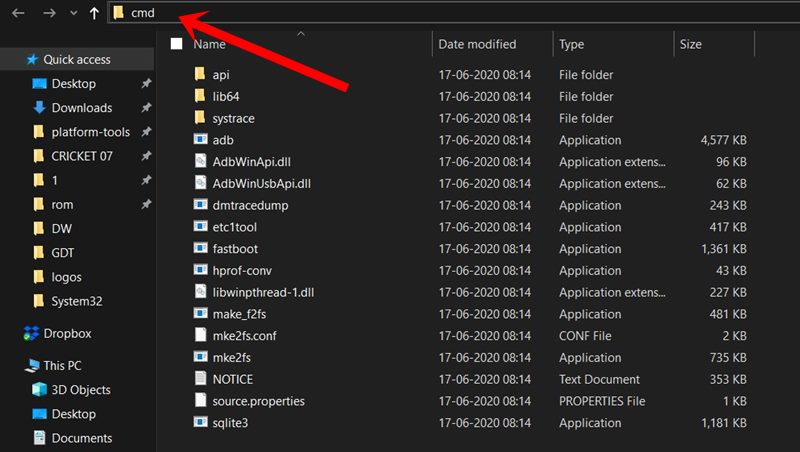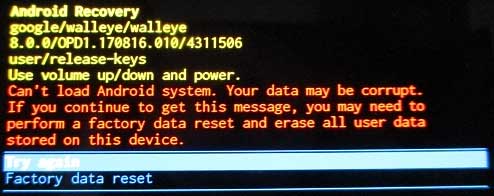When it comes to the Android operating system, unlocking the bootloader and getting root access on devices is one of the most common or popular ways to start customizing the handset. Gaining full superuser access on your Android device (subsystem) is necessary for installing advanced or powerful apps that require root. Now, if you’re a Pixel 6 series user then check out this guide on How to Unlock Bootloader and Root Google Pixel 6 and Pixel 6 Pro.
It’s worth mentioning that getting root access on the Android device always requires an unlocked bootloader. Due to the open-source nature of Android OS, plenty of users opt-in for the system-level customizations to get additional functionalities apart from custom look & feel. In that scenario, both the bootloader unlocking and rooting becomes necessary enough. It’s also worth mentioning that you can flash custom ROMs after unlocking the bootloader.
Stock ROMs although do provide better stability and faster software updates, plenty of users might not be interested in a simple looking (less-featured) Stock Firmware for years. Additionally, after ending the software support, most users want to install custom firmware to get a taste of the latest Android OS. Both the Pixel 6 & Pixel 6 Pro are new which may obviously lead developers to build custom firmware soon which requires a root and unlocked bootloader.
Also Read
Fix: Pixel 6 Pro Sound Not Working/ Audio Cutting Out, Delay or Lag
Fix: Pixel Hotspot Authentication Failure Error
Downgrade Google Pixel 6 and 6 Pro From Android 13 to Android 12
How to Fix Google Pixel 6 and 6 Pro Connectivity and Signal Loss Issue
What is Universal SafetyNet Fix, and How to Install This Magisk Module?
Fix: Google Pixel 6 and 6 Pro are Not Responding to Touch
![]()
Page Contents
What is Bootloader Unlock?
Well, a Bootloader is a set of processes (programs) that comes out of the box with the operating system and always runs when you power on your device. It basically tells the hardware to whether boot into the recovery or the system (depending on the command provided by the user). Usually, a stock bootloader is a vendor-specific program that comes in locked status, and it doesn’t allow other third-party programs or files to get flashed like Custom ROM or Root.
That’s why interested users or Android freaks requires to unlock the device bootloader first so that they can start customizing or flashing the firmware according to their choice. A locked bootloader only loads up the vendor-signed image on the device after verifying the secure boot state. So, if you’re trying to boot a third-party unsigned image on a locked bootloader, it won’t work at all. OEMs offer a locked bootloader for enhanced security and privacy.
As we’ve mentioned, you can unlock the bootloader as per your need. But do keep in mind that an unlocked bootloader will perform a factory reset of your device which means all of the internal storage data will be wiped out. Additionally, unlocking the bootloader will void the manufacturer’s warranty (if applicable). Last but not the least, an improper bootloader unlocking method or attempt may brick your device or it gets stuck in the bootloop.
Also Read
Debloat or Remove Bloatware from Pixel 6 and 6 Pro Without Root
Fix: Pixel 6 Pro No Service or No Network issue
Fix Pixel 6 Pro Error: Your device is corrupt It can’t be trusted
Guide to Unbrick Google Pixel 6 and 6 Pro
Google Pixel 6 Pro Firmware | Fastboot Factory Images and OTA Files
Fix: Pixel 6 Pro Not Showing Up On PC
Magisk Not Showing Modules, How to Fix?
List of Best Custom ROM for Google Pixel 6 and Pixel 6 Pro [Updated]
What is Rooting and Why Magisk Root is Important?
Rooting is nothing but superuser access on your device system so that you can manually tweak the system files according to your preference. Without having root access, you won’t be able to tweak, adjust, edit, or delete system files, or can’t do some extraordinary tasks. After rooting your device, you’ll be able to flash plenty of compatible custom firmware, install custom modules, delete system apps or bloatware, etc.
So, if you’re thinking to root your Android handset then Magisk is a good option as of now. Magisk is a systemless rooting method that not only provides you a seamless user experience but also works well with Google’s SafetyNet security without touching the system files on your handset. Although the SuperSU or one-click root apps are there in the market, they’ve multiple issues with the device compatibility & limitations.
Whereas another major advantage of rooting the Magisk patched boot image file is that flashing Magisk using the TWRP recovery isn’t accessible for all device models. A big thanks to topjohnwu (senior XDA recognized developer) for working hard on providing Magisk for free to use. It’s needless to say that Magisk offers a bunch of modules for tweaking the Android device apart from bypassing Google’s SafetyNet security feature to use banking apps, etc.
Also Read
How to Unlock Bootloader and Root Google Pixel 6 and 6 Pro
Before heading over to the bootloader unlocking and Magisk rooting guide, make sure to follow all the requirements, useful tips, download links, etc for a successful process on your Google Pixel 6 series. A huge thanks to V0latyle (XDA Recognized Contributor) for sharing this useful guide with necessary files.
Note: It’s worth mentioning that on Android 12 OS running device, the boot verification must be disabled to run a patched boot image. So, if you didn’t disable the boot verification before, then you’ll need to perform a factory reset on your device to wipe all the system data.
In another word, permanent root access requires a full data wipe right now.
However, if you don’t want to lose your internal data, then you can go with “live boot” the patched image as long as /vbmeta and /boot are stock. This will allow you to use temporary root access. DO NOT attempt to Direct Install Magisk to the boot image.
For subsequent updates, it’s necessary for you not to allow the device to boot into the system before you’ve disabled the Verified Boot method.
That means if you’ve sideloaded the OTA, it’ll immediately reboot to bootloader and reflash /vbmeta with –disable-verity and –disable-verification. If you dirty flash the factory image, make sure to add these two switches to the command.
If you fail to do this and allow the device to boot into the system then you’ll have to wipe data to disable it again.
If you’re rooted, then DO NOT use automatic updates as this will reflash /vbmeta without disabling the boot verification.
Also Read
Requirements:
- You’ll require a computer and a USB cable.
- Factory Images for Pixel Devices.
- Magisk APK file to patch the stock boot.img file
- Install Google USB Driver on your PC.
- Install ADB & Fastboot Tool on the PC.
- Perform a full data backup on your handset.
Download Links:
- Google USB Driver
- ADB & Fastboot Tools [Platform Tools]
- Factory Images | OTA Images
- Magisk Canary
Warning:
Unlocking the device Bootloader will void your device warranty (if any). GetDroidTips will not be responsible for any type of bricking/damaging issue to your phone while/after following this whole rooting process. You should know what you’re doing. So, do it at your own risk.
Steps to Unlock Bootloader on Google Pixel 6 and Pixel 6 Pro
- Enable the Developer Options > Enable OEM Unlock and USB Debugging.
- Go to your device Settings > About Phone > Tap on the Build Number 7 times continuously to see a message ‘You are now a developer!’.
- Now, go back to the main Settings menu > Search for Developer Options > Open it and enable OEM Unlock and USB Debugging.
- Ensure to install the ADB Fastboot zip file on your PC after extracting it.
- You should also install the Google USB Driver on your PC.
- Now, simply connect your Google Pixel 6 series phone to the computer via a USB cable.
- Go to the installed ADB & Fastboot (Platform Tools) folder on the PC.
- Next, click on the address bar inside the folder, and type cmd then hit Enter to open the Command Prompt window. [If prompted by UAC, click on Yes to allow the admin access]
- Then type the following command in the command prompt window and press Enter to check whether your Pixel 6/6 Pro device is connected into the adb mode or not:
adb devices
- If the device is connected to the PC in adb mode then it’ll give you a device ID. If not then re-install the USB Driver and retry the steps again.
- Once the device is ready, make sure to run the following command to reboot the device into the bootloader:
adb reboot bootloader
- Now, run the following command to unlock the bootloader:
fastboot flashing unlock
- Once done, make sure to download the latest factory image for your specific Pixel 6 model and extract the zip file on the PC.
- Now, open the extracted folder, and here you’ll find out the bootloader image, the radio image, the image-device-buildnumber.zip file, etc.
- Simply extract the image-device-buildnumber.zip file > Here you’ll get the stock boot.img file and the vbmeta.img file.
- Just copy and transfer the stock boot.img file to your device’s internal storage (keep it without any folder).
- Then run the following command to flash the vbmeta image file on your handset:
fastboot flash vbmeta --disable-verity --disable-verification vbmeta.img
- Once done, run the following command to boot your device into the system:
fastboot reboot
- Wait for the process to complete as it may take some time for the first time.
- Once the device booted, you can skip the initial setup process (if you want), and jump into the Magisk rooting method below.
Root Google Pixel 6 and Pixel 6 Pro via Magisk
- Now, it’s important to copy the stock boot.img file to your desktop screen and on your phone’s internal storage via the USB cable. [Don’t skip it]
- Make sure to download and install Magisk Manager on your Pixel 6 series.
- Once installed, launch the Magisk Manager app > Hit Install > Select Install again.

- Once done, tap on Select and Patch a File > Go to the internal storage on your phone.
- Head over to the transferred stock boot.img file and select it.
- Now, tap on the Let’s Go button at the top-right corner > Magisk Manager will automatically start patching it on your device.
- Make sure to wait for the process to complete.
- You’ll get the All done! message on the device screen that means patching the boot image file is successful.
- Next, go to the ‘Download’ folder on the internal storage section of your phone. Here you’ll find out the magisk_patched.img file.
- Just transfer the magisk_patched.img file to your PC (inside the Platform Tools folder).
- Again check whether the USB Debugging option has been enabled on your device or not. If not, turn it on.
- Disconnect and reconnect your device to the PC via the USB cable to refresh the connectivity.
- Now, head over to the installed ADB & Fastboot folder (Platform Tools folder) again.
- Type cmd on the address bar and hit Enter to open Command Prompt. [If prompted by UAC, click on Yes to run it as administrator]

- Now, run the following command line on the Command Prompt window to check whether the device is properly detected in fastboot or not:
fastboot devices
- Then run the following command to easily boot your Pixel 6/6 Pro device into the Fastboot (Bootloader) mode:
fastboot reboot bootloader
- Once done, execute the command line below to boot your Pixel 6/6 Pro using Magisk Patched Boot.img file: [If you don’t run this command then you may face the “Can’t load Android system. Your data may be corrupted.” error]
fastboot boot magisk_patched.img
- Next, run the following command to flash the patched boot image file on your Pixel 6 series device:
fastboot flash boot magisk_patched.img
- Once done, make sure to reboot your device to the system manually. It may take some time to load.
- Enjoy! You’ve successfully enabled root access on the Google Pixel 6 and Google Pixel 6 Pro.
If you want subsequent updates:
We do not recommend updating via the OTA Sideload method personally because you’ll have to download and extract the factory zip anyway.
Note: The automatic OTA update will simply lose the root access and require a wipe to root again the next time.
However, if you want to choose to update via OTA sideload then make sure to follow the steps below:
- Just sideload the OTA file and then immediately reboot to the bootloader using the ‘fastboot reboot bootloader’ command as mentioned above.
- Now, re-flash vbmeta by running the command below:
fastboot flash vbmeta --disable-verity --disable-verification vbmeta.img
- Once done, boot the device to the system, and allow the update to complete.
- Finally, patch and flash the stock boot image file as mentioned above.
# Steps to Fix failed to load/verify boot images
If in case, you’re getting a bootloader error message that says “failed to load/verify boot images” that means you forgot to disable the verity and verification. So, make sure to re-flash vbmeta with the –disable options.
# Steps to Fix Can’t load Android system
You may also run into this recovery message where it says “Can’t load Android system. Your data may be corrupt. If you continue to get this error message, you may need to perform a factory data reset and erase all user data stored on this device.”
So, if you’re facing this issue, that means you didn’t disable the verity and verification before, and now it’s required to have a factory data reset to proceed. Therefore, just perform the factory data reset method directly from the recovery interface as shown in the screenshot below.

This is how you can completely unlock the bootloader and enable root access on your Google Pixel 6/6 Pro device.
That’s it, guys. We assume this guide was helpful to you. For additional queries, you can comment below.
Source: XDA

You think this would work with the GrapheneOS version of Android on a Pixel 6?
Does it work with latest July update for pixel 6 and pixel 6 pro device. Also how to extract the boot.img, no steps shown for that.